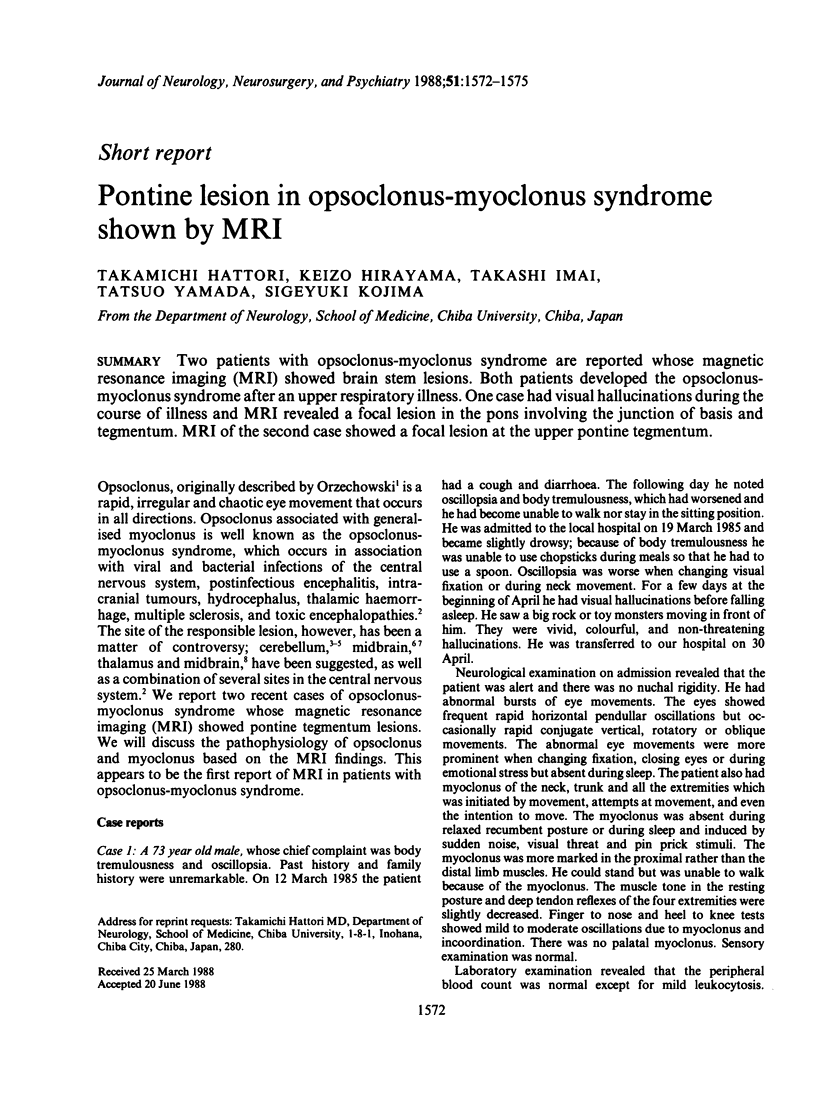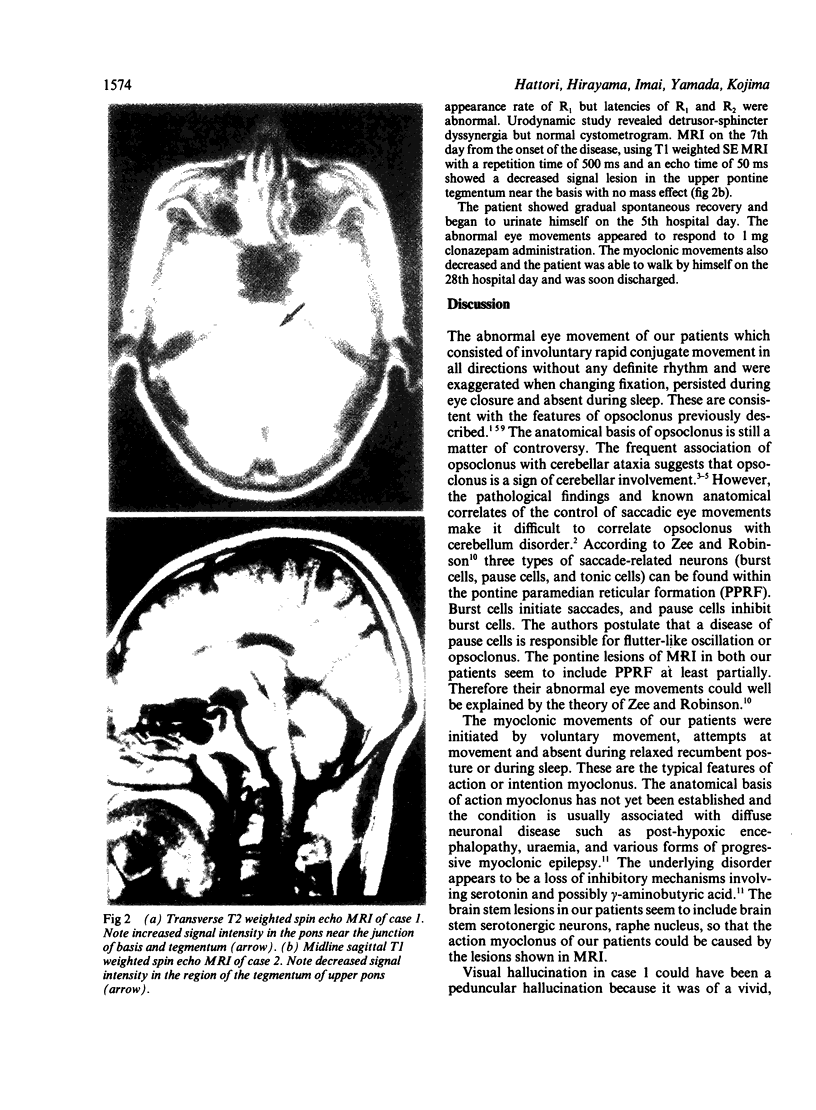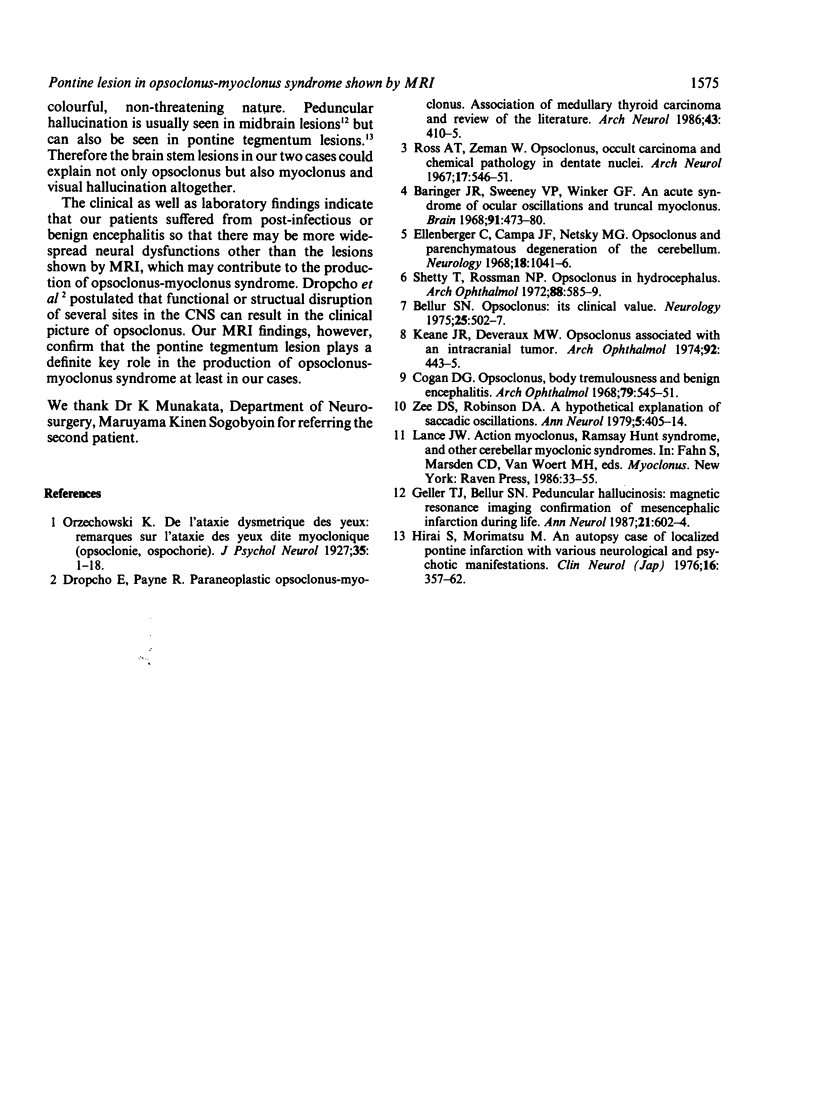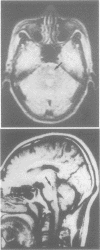Abstract
Two patients with opsoclonus-myoclonus syndrome are reported whose magnetic resonance imaging (MRI) showed brain stem lesions. Both patients developed the opsoclonus-myoclonus syndrome after an upper respiratory illness. One case had visual hallucinations during the course of illness and MRI revealed a focal lesion in the pons involving the junction of basis and tegmentum. MRI of the second case showed a focal lesion at the upper pontine tegmentum.
Full text
PDF



Images in this article
Selected References
These references are in PubMed. This may not be the complete list of references from this article.
- Baringer J. R., Sweeney V. P., Winkler G. F. An acute syndrome of ocular oscillations and truncal myoclonus. Brain. 1968 Sep;91(3):473–480. doi: 10.1093/brain/91.3.473. [DOI] [PubMed] [Google Scholar]
- Bellur S. N. Opsoclonus: Its clinical value. Neurology. 1975 Jun;25(6):502–507. doi: 10.1212/wnl.25.6.502. [DOI] [PubMed] [Google Scholar]
- Cogan D. G. Opsoclonus, body tremulousness, and benign encephalitis. Arch Ophthalmol. 1968 May;79(5):545–551. doi: 10.1001/archopht.1968.03850040547009. [DOI] [PubMed] [Google Scholar]
- Dropcho E., Payne R. Paraneoplastic opsoclonus-myoclonus. Association with medullary thyroid carcinoma and review of the literature. Arch Neurol. 1986 Apr;43(4):410–415. doi: 10.1001/archneur.1986.00520040088029. [DOI] [PubMed] [Google Scholar]
- Ellenberger C., Jr, Campa J. F., Netsky M. G. Opsoclonus and parenchymatous degeneration of the cerebellum. The cerebellar origin of an abnormal ocular movement. Neurology. 1968 Nov;18(11):1041–1046. doi: 10.1212/wnl.18.11.1041. [DOI] [PubMed] [Google Scholar]
- Geller T. J., Bellur S. N. Peduncular hallucinosis: magnetic resonance imaging confirmation of mesencephalic infarction during life. Ann Neurol. 1987 Jun;21(6):602–604. doi: 10.1002/ana.410210614. [DOI] [PubMed] [Google Scholar]
- Hirai S., Morimatsu M., Yoshikawa M., Nagashima K. [Localized pontine infarction with various neurological and psychotic manifestations--an autopsy case]. Rinsho Shinkeigaku. 1976 May;16(5):357–362. [PubMed] [Google Scholar]
- Keane J. R., Devereaux M. W. Opsoclonus associated with an intracranial tumor. A clinicopathologic case report. Arch Ophthalmol. 1974 Nov;92(5):443–445. doi: 10.1001/archopht.1974.01010010455017. [DOI] [PubMed] [Google Scholar]
- Lance J. W. Action myoclonus, Ramsay Hunt syndrome, and other cerebellar myoclonic syndromes. Adv Neurol. 1986;43:33–55. [PubMed] [Google Scholar]
- Ross A. T., Zeman W. Opsoclonus, occult carcinoma, and chemical pathology in dentate nuclei. Arch Neurol. 1967 Nov;17(5):546–551. doi: 10.1001/archneur.1967.00470290100013. [DOI] [PubMed] [Google Scholar]
- Shetty T., Rosman N. P. Opsoclonus in hydrocephalus. Arch Ophthalmol. 1972 Dec;88(6):585–589. doi: 10.1001/archopht.1972.01000030587001. [DOI] [PubMed] [Google Scholar]
- Zee D. S., Robinson D. A. A hypothetical explanation of saccadic oscillations. Ann Neurol. 1979 May;5(5):405–414. doi: 10.1002/ana.410050502. [DOI] [PubMed] [Google Scholar]



